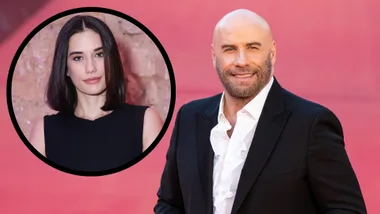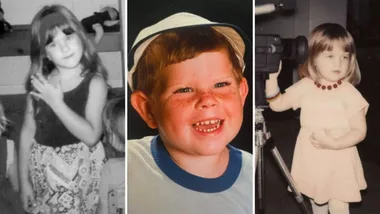Little girls love pink — or do they? Peggy Orenstein looks at the influence of marketing and asks whether girls are born wanting to be princesses or have had princesshood thrust upon them.
Here is my dirty little secret: as a journalist, I have spent nearly two decades writing about girls, thinking about girls, talking about how girls should be raised. Yet, when I finally got pregnant myself, I was terrified at the thought of having a daughter.
I was supposed to be an expert on girls’ behaviour. What if, after all that, I was not up to the challenge myself?
In pictures: Suri Cruise’s public meltdown
Then I saw the incontrovertible proof on the sonogram (or what they said was incontrovertible proof; to me, it looked indistinguishable from, say, a nose) and I suddenly realised I had wanted a girl — desperately, passionately — all along. I had just been afraid to admit it.
Yet I still fretted over how I would raise her, what kind of role model I would be, whether I would take my own smugly written advice on the complexities surrounding girls’ beauty, body image, education, achievement.
Would I embrace frilly dresses or ban Barbies? Push football boots or tutus?
Shopping for her, I grumbled over the relentless colour coding of babies. Who cared whether the crib sheets were pink or plaid? During those months, I must have started a million sentences with “My daughter will never…”
And then I became a mother. Daisy was, of course, the most beautiful baby ever (if you don’t believe me, ask my husband).
I was committed to raising her without a sense of limits: I wanted her to believe neither that some behaviour or toy or profession was not for her sex nor that it was mandatory for her sex.
I wanted her to be able to pick and choose the pieces of her identity freely — that was supposed to be the prerogative, the privilege of her generation.
For a while, it looked as if I were succeeding. On her first day of nursery, at the age of two, she wore her favourite outfit — her “engineers” (a pair of pin- striped overalls) — and proudly toted her Thomas the Tank Engine lunchbox.
My daughter had transcended typecasting. Oh, how the mighty fall. All it took was one boy who, while whizzing past her in the playground, yelled, “Girls don’t like trains!” and Thomas was shoved to the bottom of the toy chest.
Within a month, Daisy threw a tantrum when I tried to wrestle her into trousers. As if by osmosis, she had learned the names and gown colours of every Disney Princess.
She gazed longingly into the tulle-draped windows of the local toy stores and, for her third birthday, begged for a “real princess dress” with matching plastic high heels.
Meanwhile, one of her classmates, the one with two mummies, showed up to school every single day dressed in a Cinderella gown. With a bridal veil.
What was going on here? My fellow mothers, women who once swore they would never be dependent on a man, smiled indulgently at daughters who insisted on being addressed as Snow White.
The supermarket checkout clerk invariably greeted Daisy with “Hi, Princess”. The waitress at our local breakfast joint, a hipster with a pierced tongue, called Daisy’s “funny-face pancakes” her “princess meal”.
The lady at the pharmacist offered us a free balloon, then said, “I bet I know your favourite colour!”, and handed Daisy a pink one, rather than letting her choose for herself.
Then, shortly after Daisy’s third birthday, our high-priced paediatric dentist pointed to the exam chair and asked, “Would you like to sit in my special princess throne so I can sparkle your teeth?”
“Oh, for God’s sake,” I snapped. “Do you have a princess drill, too?” She looked at me as if I were the wicked stepmother.
Yet, honestly, since when did every little girl become a princess? It wasn’t like this when I was a kid and I was born back when feminism was still a mere twinkle in our mothers’ eyes.
We did not dress head to toe in pink. We did not have our own miniature high heels.
As my little girl made her daily beeline for the dress-up corner of her classroom, I fretted over what playing Little Mermaid, a character who actually gives up her voice to get a man, was teaching her.
On the other hand, I thought, maybe I should see princess mania as a sign of progress, an indication that girls could celebrate their predilection for pink without compromising strength or ambition.
That, at long last, they could “have it all”: be feminist and feminine, pretty and powerful, earn independence and male approval. Then again, maybe I should just lighten up and not read so much into it.
In pictures: Child stars all grown up
This is an edited extract from Cinderella Ate My Daughter: Dispatches From The Front Lines of the New Girlie-Girl Culture, by Peggy Orenstein, published by Harper Press.
Read more of this story in the December issue of The Australian Women’s Weekly.
Your say: Do you think girls are born liking pink, or is it something drummed into them?

Video: Horror parenting stories











